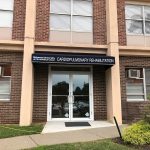Many sicknesses are common aspects of life, such as colds and stomach bugs. However, other diseases like cancer have a much more significant impact on human lives and often affect patients’ family members as well. One such condition is lung cancer.
While lung cancer is the leading cause of cancer-related deaths globally, there are ways to detect it before the disease progresses too far. The skilled team of physicians and medical personnel at Richmond University Medical Center in Staten Island, New York, support patients with lung cancer every step of the way. Here, we discuss the early symptoms of lung cancer and how early detection can help.
Potential Early Symptoms of Lung Cancer
While those who smoke are at a greater risk of developing lung cancer, the disease can also affect those who have never smoked in their life. Other risk factors for lung cancer include:
- Consistent exposure to secondhand smoke
- Exposure to radiation therapy or radon gas
- Family history of the disease
These aspects may compound the likelihood a person develops lung cancer, but anyone can be at risk for the disease. Knowing the warning signs is vital for early detection, which enables physicians and oncology teams to formulate the best treatment plan.
While lung cancer does not always create noticeable symptoms in its earliest stages, it is still important to look out for the key indicators. Some of the most common symptoms include the following:
- Chest pain
- A new, persistent cough
- Coughing up blood (even in small amounts)
- Shortness of breath
- Bone pain
- Hoarseness
- Headaches
- General fatigue
- Non-deliberate weight loss
While these symptoms appear in several common illnesses, patients who experience them persistently should meet with a physician. This is especially important if there is a history of cancer in the family or if the patient has ever smoked. It is also worthwhile for patients who smoked in the past to get screened regularly for lung cancer even if they are not currently experiencing any of these symptoms.
Aside from these typical signs, there are other, less-common lung cancer symptoms to watch out for. These indicators include:
- Swelling in the face or neck
- Difficulty swallowing or pain while swallowing
- Changes in the appearance of the fingers (finger clubbing)
Seeking Professional Help
While patients can examine themselves to see if they display signs of lung cancer, medical professionals have tools and resources available to help detect lung cancer early. For instance, a physician may recommend a lung screening to accurately diagnose a patient with lung cancer.
Lung screenings use a low-dose CT scan without contrast. This scan, which takes only about 15 minutes, uses X-rays to examine the lungs during a single-held breath and allows physicians to find tumors at their earliest stages, during which up to 90% of the disease can be cured. These screenings are recommended for those who have smoked frequently in their lives.
Advancements in medicine and technology have created more lung cancer treatment options than in the past, enabling patients with more complex needs to obtain the proper care. Many of these procedures are minimally invasive, including the use of an electromagnetic navigational bronchoscopy (ENB) system, which allows for a biopsy without an incision.
Talk to a Trusted Physician
Patients who are experiencing any of the early symptoms of lung cancer, or those interested in getting a professional opinion should turn to the team at Richmond University Medical Center in Staten Island, New York. Our board-certified oncologists are ready to help patients both physically and emotionally as they navigate the illness. With state-of-the-art equipment, modern and minimally invasive techniques, and informative staff, Richmond University Medical Center strives to make sure every patient has a positive experience when they need it most. Contact us today to get information and learn more about screening and treatment options.




